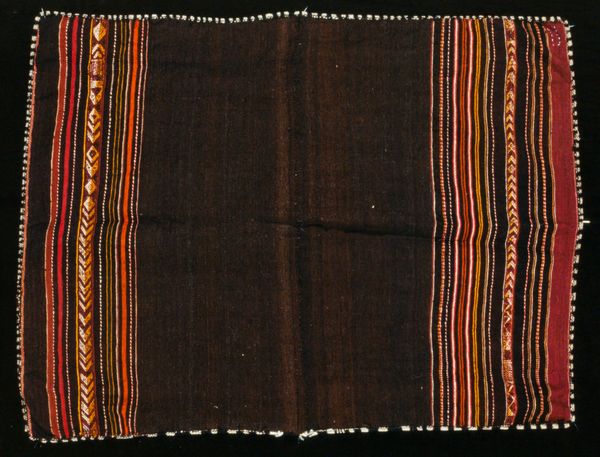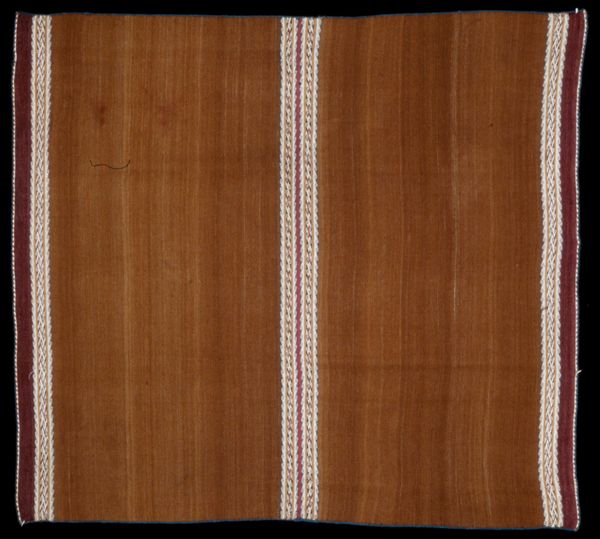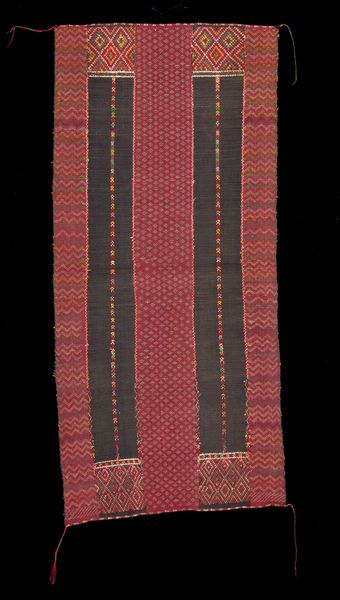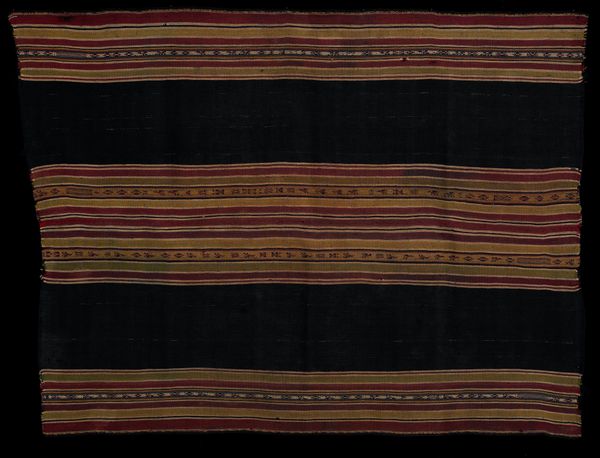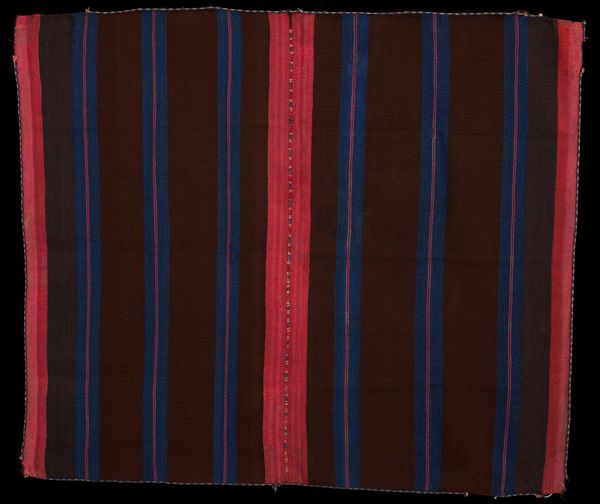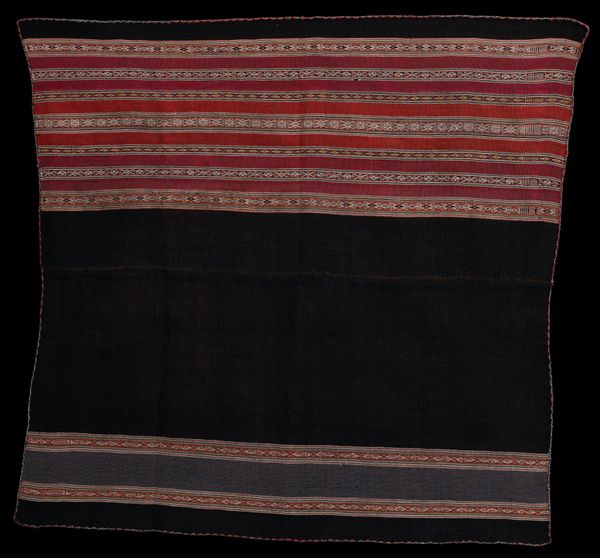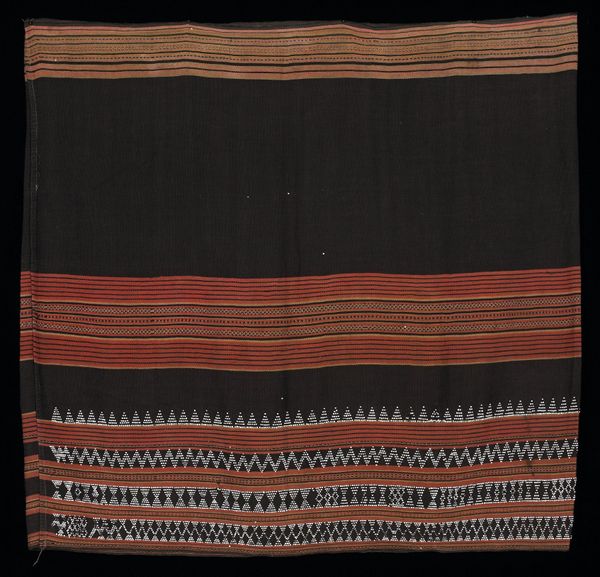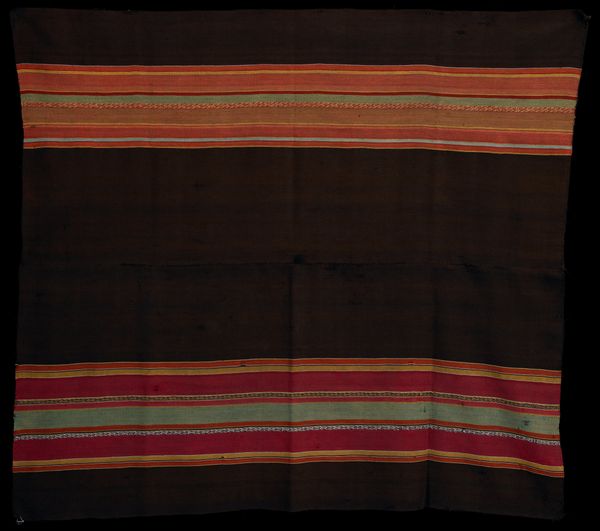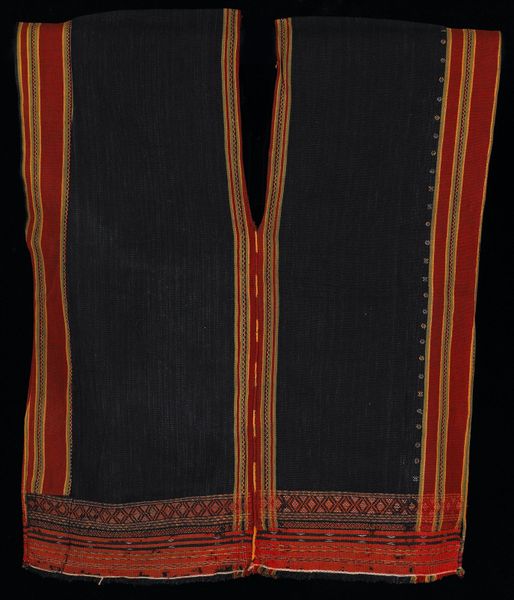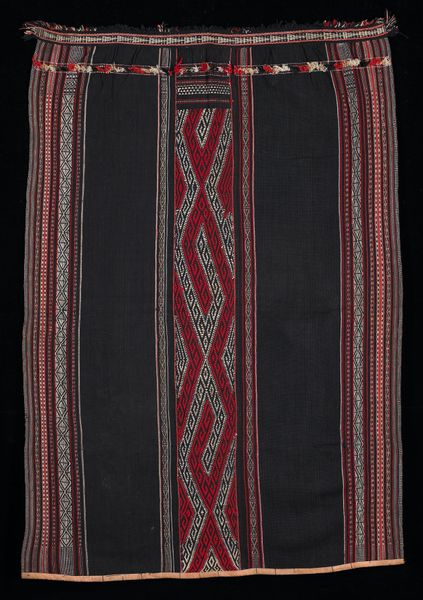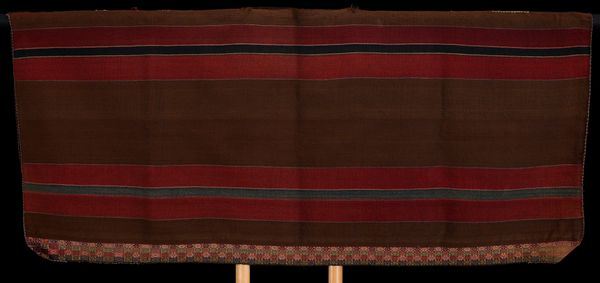
fibre-art, weaving, textile
#
fibre-art
#
weaving
#
textile
#
geometric pattern
#
geometric
#
indigenous-americas
Dimensions: 43 5/8 x 37 3/8 in. (110.81 x 94.93 cm)
Copyright: Public Domain
Curator: Here we have an Aymara woman's awayo, a mantle, created around the 19th century. It's now held in the collection of the Minneapolis Institute of Art. Editor: It has such an interesting arrangement. The composition strikes me first—broad expanses of dark indigo flanked by these fields of incredibly intricate, almost vibrating stripes. There's a certain weight and rhythm in how the colors and textures interact. Curator: Indeed. These awayos were not merely decorative; they were deeply embedded in the social fabric of Aymara communities. As a textile, it represents more than just personal adornment, signifying cultural identity, womanhood, and status within the community. The weaving techniques and patterns would be passed down through generations of women. Editor: Looking closer at the stripes, I see such incredible precision. The weaver's control over line and form is really on display here. And the limited palette makes the geometric designs all the more powerful. Curator: The geometric motifs you're noticing would often encode ancestral stories and symbolic representations of their cosmology and environment. The patterns were not chosen arbitrarily but reflected an individual's or family’s history and beliefs. To wear such an awayo was to wear your identity, heritage, and place in the cosmos. Editor: I am captivated by the way the linear patterns create a sense of depth and movement, pushing and pulling at the eye. How does the structural arrangement—the strict verticals and horizontals—reflect larger concepts of order or balance within Aymara society? Curator: It brings up such a critical discussion around representation and power. What happens when objects imbued with so much cultural meaning are displayed in museum spaces divorced from their original context? What responsibilities do we, as curators and viewers, have in interpreting and honoring these objects respectfully? Editor: Thank you, those points gives me much to reflect upon as I continue studying the piece. It's an amazing piece for sure. Curator: Absolutely. Understanding that history, we are now hopefully equipped to look beyond its surface aesthetic to appreciate its intricate and resonant significance.
Comments
No comments
Be the first to comment and join the conversation on the ultimate creative platform.
